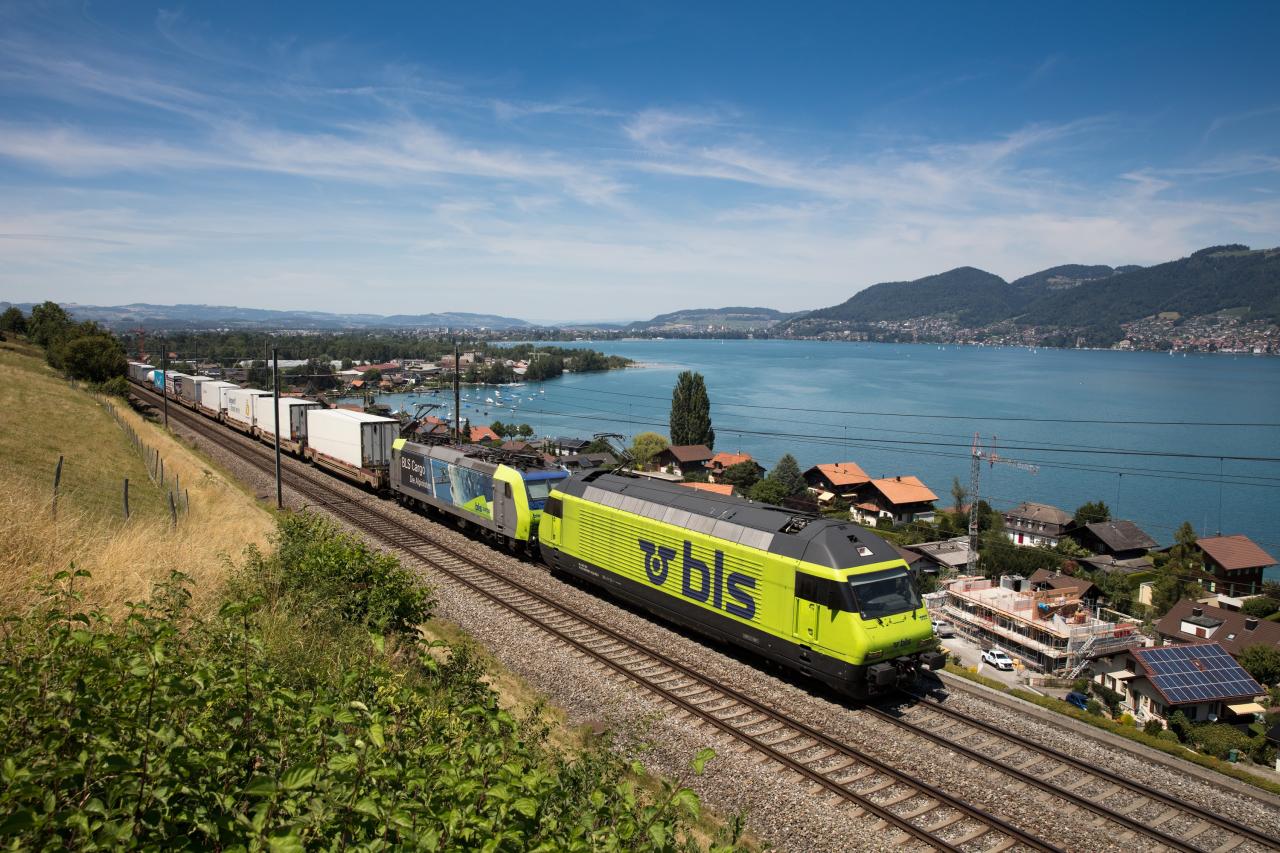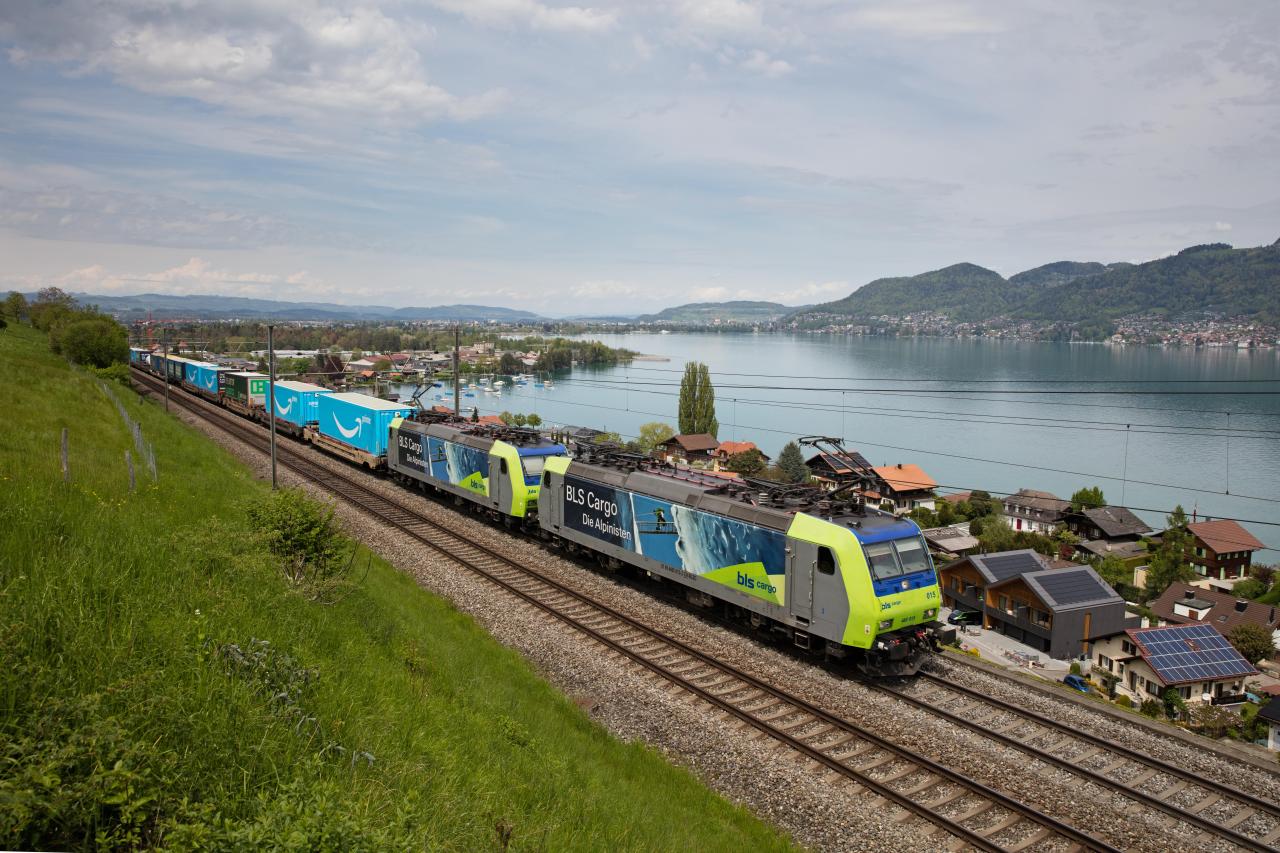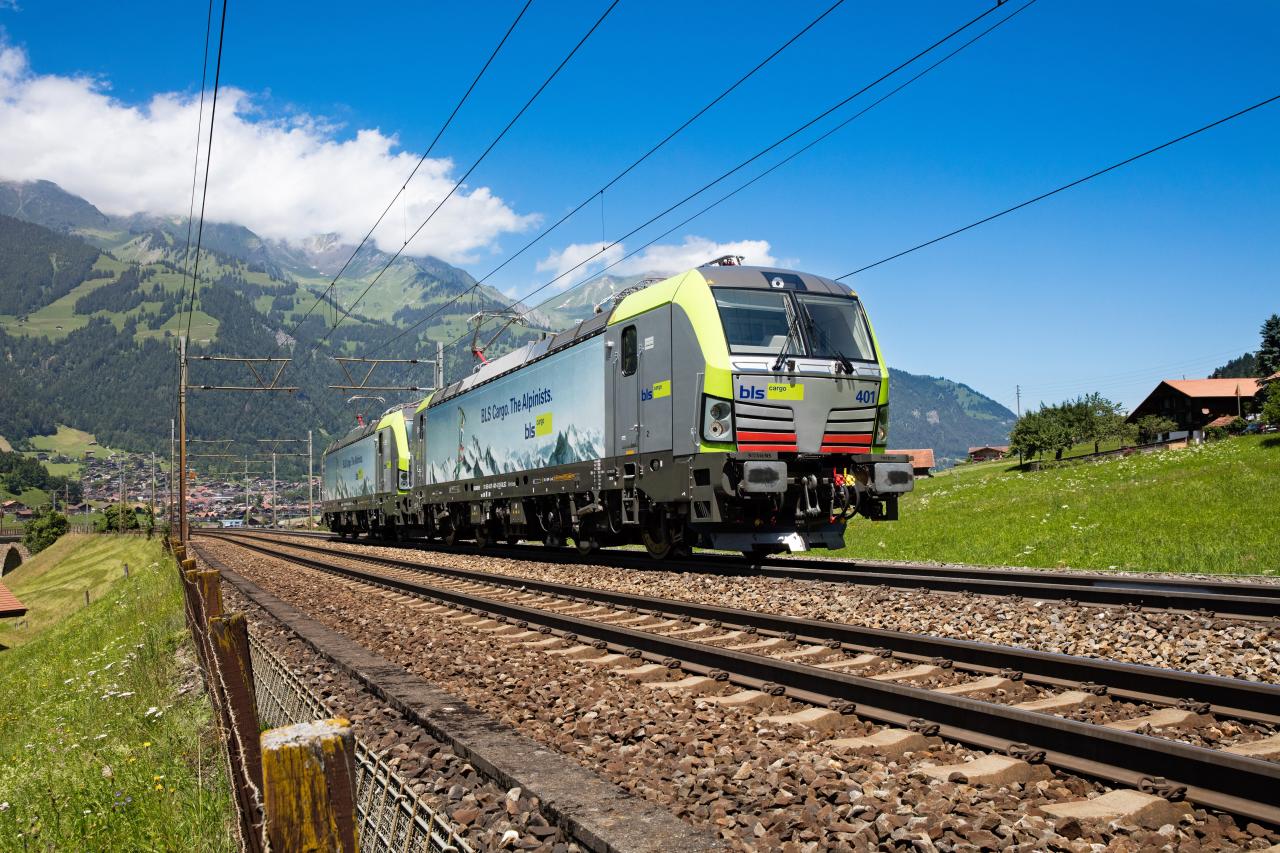Due to the accident in the Gotthard base tunnel on 10 August, a backlog of trains and loading units has built up along the Rhine-Alpine corridor despite the low demand due to the holidays. Switzerland does have diversion options via the Gotthard mountain route and the Lötschberg/Simplon route. But these cannot accommodate the full volume of the route via the Gotthard base tunnel due to profile and capacity restrictions.
The opening of the undamaged tube in the Gotthard Base Tunnel, announced for 23 August, will provide relief for Switzerland's supply and transit traffic. SBB Infrastructure will provide 90 train paths per day for goods trains with a 4-metre profile. Together with 20 diversionary train paths via the Gotthard mountain route for conventional wagonload traffic and a residual capacity via Lötschberg-Simplon, a considerable part of the necessary train path capacity for transalpine freight traffic through Switzerland is created in planning terms.
In order to use or expand this capacity as effectively as possible, the freight transport industry proposes the following criteria and measures:
- Use the undamaged east tunnel of the Gotthard Base Tunnel exclusively for freight traffic and with priority for trains with a 4-metre profile.
- Successively maximise the capacity of the Gotthard base tunnel by increasing speeds and using all available track sections throughout the tunnel.
- Use of the mountain route for passenger traffic and for conventional wagonload trains which do not require a 4-metre profile and which, because of their low weight, are not dependent on costly multiple traction.
- Utilisation of the available capacity on the Lötschberg line and its access routes in the south by means of appropriate measures.
- Active operational management using all available stabling and buffer capacities. 6. close coordination by SBB.
- Close coordination by SBB Infrastructure with the neighbouring infrastructure managers in the south and in the north in the sense of crisis management, in order to adjust timetables and to avoid inefficiencies due to road works and other incidents on the diversion and access routes or to overcome them as quickly as possible.
It should be noted that the single-tube capacity of the Gotthard must be reserved exclusively for freight traffic until the second tube is commissioned. This is because the Gotthard Base Tunnel, in conjunction with the Ceneri Base Tunnel and the continuous 4-metre corridor from border to border, fulfils an essential prerequisite for the exchange of goods on the north-south axis and for the legally enshrined modal shift policy. While passenger traffic can benefit from a solid, reliable transport offer via the mountain route, freight traffic is threatened by a massive shift back to the roads with massive congestion on the A2 between Basel and Chiasso if sufficient capacity is not available over a longer period of time.
Preventing this is the central concern of all players in rail freight transport. They are committed to making the best possible use of the available capacity by acting flexibly and cooperating pragmatically with the aim of guaranteeing logistics a reliable, marketable transport offer by rail even in this difficult situation.
Contact: Michael Ruefer, Communication & staff BLS Cargo, michael.ruefer@bls.ch



